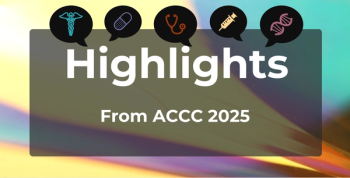
Dr Steve Pearson: Patient Perspectives Guide ICER Value Framework Development
According to Steve Pearson, MD, MSc, president of the Institute for Clinical and Economic Review (ICER), patient perspectives are critical for determining meaningful outcomes and helping to guide the cost-effectiveness review process.
According to Steve Pearson, MD, MSc, president of the Institute for Clinical and Economic Review (ICER), patient perspectives are critical for determining meaningful outcomes and helping to guide the cost-effectiveness review process.
Transcript (slightly modified)
How does ICER work to incorporate patient perspectives into its value frameworks?
Patient perspectives, in a sense, guide almost every step we take in our report process. At the very beginning, when we’re just thinking of which topics to do, we reach out to patient groups to make sure, as part of what we call our scoping phase, that we really understand what living with the condition is like from their perspective. We know that they have heard policy makers sometimes, if it’s an organized patient group, they’ve heard policy makers, they’ve heard clinicians sometimes get it wrong, where they don’t understand the full spectrum. They don’t understand what really matters most to patients.
Now, we always have questions of our own. We want to know, for instance, specifically, are there clinical outcome measures that are in the clinical trials that they think are more important to the patients than others, so that they can help us prioritize those. Again, that’s a really critical part because that feeds into every step of our process from the review of clinical excellence through to the cost-effectiveness model.
We establish those relationships, we try to make sure we get a diverse set of patients and patient groups by reaching out to as many as we can find, and then again at that scoping phase, it’s critical. We also feed back to them our early results and make sure that they get a chance to have input. We often have, in a sense, a patient expert be one of the official reviewers of our draft report before it goes out for more full public comment.
That all happens before we even have our public meeting, which is the other place where we bring all stakeholders together, but patients and the clinical experts have a very important role right at the beginning of the day, where they often are involved as the summary of the evidence is being presented, and they’re given the opportunity to lend nuance to that, to give a broader perspective, if you will.
Then, they sit at the table as our independent counsels discuss the evidence and start to get ready to vote, so that if questions come up, they’re right there in the midst of the conversation to be able to help lend that broader perspective, and sometimes answer very specific questions about key issues of evidence and value from the patient’s perspective.
Newsletter
Stay ahead of policy, cost, and value—subscribe to AJMC for expert insights at the intersection of clinical care and health economics.









































